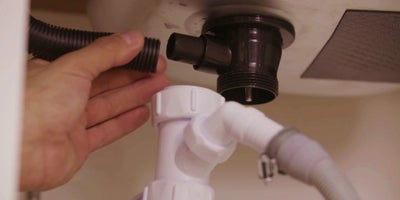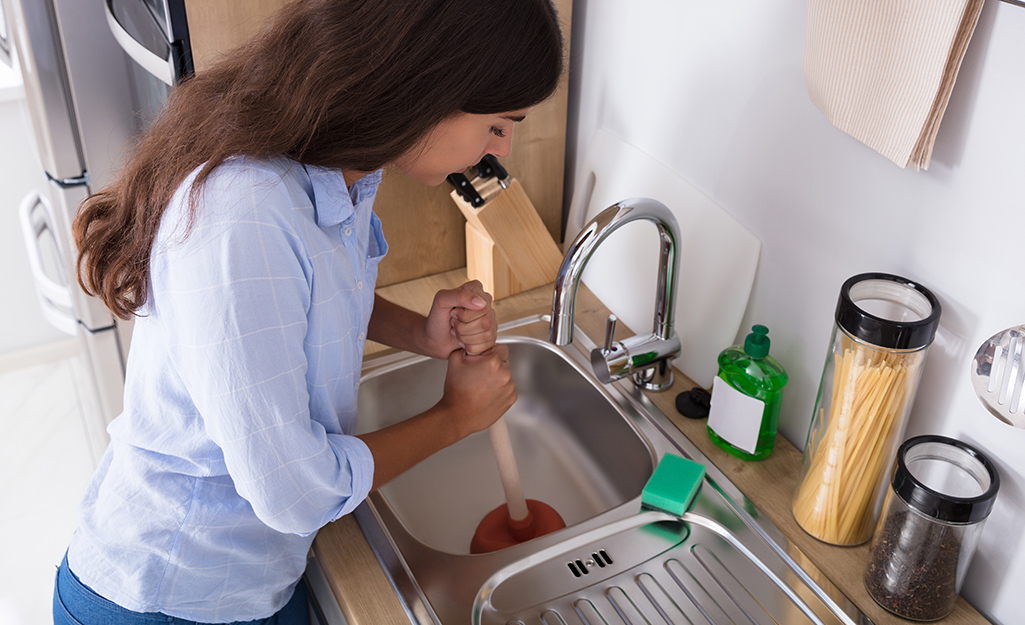Practical Ways To Fix Slow-Draining Sink Problems
Practical Ways To Fix Slow-Draining Sink Problems
Blog Article
In this article further down you'll find some extremely good expertise on the subject of Solved! How to Fix a Slow Sink Drain.

Introduction
We have actually all existed: You're cleaning your teeth or washing your hands, and you notice the water merging in the sink. Rather than quickly swirling down the tubes, it remains, transforming your once-refreshing early morning routine right into a mini overload scene. A slow-draining sink isn't just irritating; it's often a sign of larger pipes issues hiding under the surface area. The good news is that a lot of slow-draining sinks can be fixed with a little knowledge, a couple of basic tools, and some persistence. Prepared to tackle this job head-on? Let's roll up our sleeves and dive right in.
Comprehending the Causes of a Slow-Draining Sink
Before you begin poking around in your pipelines, it assists to understand what may be causing the slowdown. Recognizing the origin makes it less complicated to pick the ideal solution.
Devices and Materials You'll Require
The right devices make all the difference. Fortunately, you will not require a completely stocked plumber's van to finish the job.
Step-by-Step Guide to Fixing a Slow-Draining Sink
Currently, let's get into the nitty-gritty. This detailed process will direct you via easy techniques to restore your sink's drainage.
Step 1: Get Rid Of and Clean the Stopper
Usually, the stopper (that small plug you push down to obstruct water) is the initial culprit. Remove it very carefully and wipe any kind of hair or gunk trapped around its base. Rinse it completely before putting it back in place.
Step 2: Utilize a Plunger to Dislodge Debris
Got that plunger ready? Setting it over the drain and give it a few company pumps. The idea is to produce suction that can loosen up any blockage. If you see littles particles floating up, you get on the right track.
Action 3: Try a Drainpipe Snake or Cable Wall Mount
If the bettor does not do the trick, it's time to draw out the drain serpent. Carefully feed it into the drainpipe and twist as you go. You might really feel some resistance-- that's likely the obstruction. Keep twisting and drawing until you eliminate the obstruction. If you do not have a drainpipe snake, a corrected the alignment of wire wall mount can operate in a pinch.
Step 4: Use a Do It Yourself Drain Cleaner
An all-natural cleaner made from baking soda and vinegar can break down recurring crud. Put half a cup of cooking soda into the drain, complied with by half a cup of vinegar. Let it fizz for about 15 mins, then flush with hot water. This chain reaction usually does wonders for minor obstructions.
Tip 5: Rebuild and Test the Sink
Put whatever back together and run the faucet. Does the water now swirl away at a respectable speed? If yes, offer on your own a pat on the back. Otherwise, do not anguish-- there are still a couple of even more tricks up your sleeve.
Important Tools for Do It Yourself Repairs
A bettor is your go-to beginning point. A little, sink-sized bettor creates suction that can displace minor blockages. For even more relentless clogs, a drainpipe snake (often called a plumbing technician's auger) functions wonders. A set of handwear covers, a flashlight, and perhaps a pair of protective goggles are likewise handy.
Advised Cleansing Solutions
Mild dish soap and warm water can help break down oily build-up. A combination of cooking soft drink and vinegar is a time-tested natural home remedy, and chemical cleaners provide a more eco-friendly method. Keep chemical drainpipe cleansers as a last hope, as they can be harsh on your pipes.
Typical Wrongdoers Behind Slow Water Drainage
So, what's clogging things up? Usually, it's a blend of daily debris-- believe hair, soap residue, toothpaste residue, and remaining food bits. Gradually, these tiny bits accumulate and hold on to the pipeline wall surfaces, slowly narrowing the passage and making it harder for water to go through. Sometimes, natural resource from difficult water can also include in the gunk, producing the excellent storm for stubborn obstructions.
When is it Time to Act?
If you see the water draining pipes slower than typical, it's a good idea to interfere earlier as opposed to later on. Waiting also long might result in complete obstructions, unpleasant odors, or perhaps pipe damage. If the water takes more than a couple of seconds to remove after switching off the faucet, consider it a warning and prepare yourself to put on your do it yourself hat.
Safety First: Precautions and Prep work
Prior to you launch into unclogging setting, think of safety and security. You're managing potentially unclean water and debris, so slip on a set of gloves. If you're utilizing chemical cleansers, guarantee the area is well-ventilated and follow the guidelines on the tag.
Safety Gear and Work Area Configuration
Set some old towels or rags around the sink area to catch splashes. Clear away any items that might enter your means, like soap dispensers or tooth brush owners. Make certain you have excellent lights-- grab a flashlight if needed.
Alternative Methods for Stubborn Clogs
Not all clogs are created equal. If your sink still declines to work together, think about these alternative remedies.
Baking Soda and Vinegar Technique
We already discussed this, however it's worth noting once more. This gentle, environment-friendly approach is much safer than chemical cleaners and frequently fairly effective.
Enzymatic Drain Cleansers
Enzyme-based cleaners make use of natural microorganisms to digest raw material. They're an exceptional choice if you're aiming to avoid severe chemicals. Simply remember, they might take a bit longer to function their magic.
Chemical Drainpipe Cleaning Company: Advantages And Disadvantages
Chemical cleansers can blow up with hard blockages quick, yet they're not without downsides. They can create warm and fumes, damages pipes if utilized excessively, and pose ecological dangers. Use them sparingly, and constantly comply with the directions thoroughly.
Preventive Measures to Maintain Your Sink Flowing
Prevention is the most effective cure. By adopting a couple of simple habits, you can keep your sink from decreasing in the first place.
Normal Cleaning Behaviors
Wipe down the sink basin and fixture area routinely. Eliminate hair or food bits before they have an opportunity to wash down the drainpipe.
Staying Clear Of Harmful Substances Down the Drain
Think twice prior to dumping coffee premises, oil, or coarse veggie scraps down the sink. These culprits cling to pipeline wall surfaces, developing blockages gradually.
Regular Upkeep Checks
Set up a quick month-to-month evaluation. Run warm water through the sink for a few mins, focusing on the flow. If it appears sluggish, act quick before it becomes a full-blown clog.
When to Call a Professional Plumbing Professional
Sometimes, despite just how tough you attempt, that clog just won't move. That's when it's time to generate the pros.
Indicators That Show a Much More Severe Concern
If your sink drains pipes gradually despite several attempts, or if you notice water supporting in various other components (like your shower or bathroom), you may have an extra major pipes problem hiding much deeper in the system.
Balancing Do It Yourself Efforts with Professional Help
While do it yourself can conserve you cash and supply a feeling of accomplishment, there's no embarassment in calling a specialist. A professional plumber can assess your whole plumbing arrangement, ensuring there's no underlying damage or long-lasting problem that can cost you much more later on.
Comparing Prices and Long-Term Solutions
Before choosing, consider the big picture. An inexpensive, quick fix might solve the trouble momentarily, but purchasing a much more irreversible remedy might conserve you money and stress and anxiety over time.
Weighing the Expenses of DIY vs. Expert Repairs
Do it yourself repairs often cost little more than the rate of a plunger or a container of baking soda. Expert services, on the other hand, come with a cost but may protect against repeated concerns and pricey repair services later.
Investing in Quality Fixtures and Upgrades
If your sink's layout contributes to regular clogs, it could be worth upgrading to higher-quality components or altering the pipes design. Consider this an investment in your house's capability and comfort.
Conclusion
A slow-draining sink can seem like a minor irritability, yet it's commonly an indicator that your plumbing needs a little tender loving care. By comprehending the root causes, using the right tools and methods, and dedicating to basic preventive measures, you can keep your sink streaming freely. And when all else fails, never ever wait to call an expert-- your home's plumbing is worth the financial investment in treatment and maintenance.
Three Common Ways to Fix a Slow Drain
Baking Soda Method
Boil a full pot of water. Measure out cup of baking soda and pour it down the drain. Then take cup of the magical cleansing substance known as white vinegar and drop that down there too. Allow the mixture to fizz in the drain for five minutes as the vinegar and baking soda combine. Now dump in that whole pot of boiling water. This combination of cleaning substances should clear out anything that is causing your sink to drain slowly. If it doesn t...
Zip-It
If the baking soda method doesn t clear out your drain, it may be because a significant amount of hair and/or other debris has collected there and you need to remove it. Purchase a Zip-It tool at any home improvement or hardware store and insert it into your drain. It will catch any collected hair or debris that s blocking the flow of water. Pull it out. If it s got a big clump of hair, etc. on the end, you ve probably got your culprit.
Drain Cleaner
If these methods don t work, there is the standard drain cleaner that you can also buy in a hardware store or even your local grocery store. It s better if you can use a household solution, but these drain cleaners often work in a pinch. They re very simple to use. You generally just dump them in your drain and wait. If even this method is not effective, it may be time to call the plumber.
https://www.mrrooter.com/oneida/about-us/blog/2017/july/three-common-ways-to-fix-a-slow-drain/

Do you really like reading about How to Fix a Slow Draining Sink? Make feedback directly below. We'd be happy to hear your opinions about this blog post. We are looking forward that you visit us again soon. Are you aware of another individual who is excited about the subject? Do not hesitate to promote it. Thank you for taking the time to read it.
Browse Website Report this page